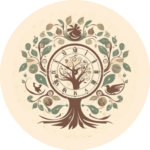
In the 1920s, Virginia Woolf famously described how the history of women was unknown: ‘It has been common knowledge for ages that women exist, bear children, have no beards, and seldom go bald, but save in these respects […] we know little of them and have little evidence upon which to base our conclusions.’ Woolf was writing shortly after women were granted the vote in the UK (1918), after an arduous campaign by the suffragettes. This first feminist wave, associated with the political women’s suffrage movement, did not prompt historians to investigate women’s history (with a few exceptions).
In the 1960s, however, a combination of feminism’s ‘second wave’ (characterised by the women’s liberation movement) and internal changes in the discipline (which I describe in more detail here) meant that women were gradually considered a worthy subject of historical study. Feminist scholars fought to establish women’s studies courses in universities in Europe and the USA in the 1970s. Feminist activists moved from the question of whether it was possible to write a history of women to the assertion that any history that did not include them was necessarily an incomplete one. Fuelled by both intellectual and political goals, these feminist researchers started to write history in new ways – which often contradicted the way history had traditionally been written.
![Emmeline Pethwick-Lawrence and Emmeline Pankhurst at a Suffragette meeting in Caxton Hall, Manchester (c.1908). [Wikicommons]](https://juliamartins.co.uk/wp-content/uploads/2022/02/Suffragettes_England_19081.jpg)
This questioning of how we conceptualise history was inevitable, as feminist scholars did not want ‘women’s history’ to simply be an additional field of study. Instead, this field would profoundly change how we think of historical narratives in general. To integrate new voices and perspectives, historians’ analytical structures and tools themselves had to be rethought. History was already going through many internal changes as a discipline (as I explain in What is Cultural History?). Heavily influenced by anthropology, historians considered new objects of study, such as lower classes, often excluded from the historical narrative. Women were a great example of the ones left behind in the study of history.
By thinking of womanhood and the role women played in the past, historians questioned categories, influenced by earlier philosophy, such as Simone de Beauvoir’s work. If ‘one is not born, but rather becomes, a woman’ (or a man, for that matter), then we must study how we construct our sexual and gender categories. In other words, as feminist scholars started to deconstruct femininity and its history, it was unavoidable that the same would be done to masculinity.

Furthermore, with the Stonewall Riots in 1969, and especially with the AIDS epidemic in the 1980s, the fight for gay rights gained momentum and became part of the mainstream. Queer studies progressively gained space in universities, combining academic and political goals, as women’s studies had earlier. At the same time, feminist historians who had established these ‘women’s studies’ courses in academia gradually realised that their aims to change the way we conceptualise history had not been fully realised. ‘Women’s history’ was still a sub-field of history, apart from the more traditional, male-dominated ways of writing history.
However, the move from ‘women’s history’ to a broader ‘gender history’, though it might have seemed natural to some, did not happen without resistance. Some feminists feared that turning to how we conceptualise gender, in general, might mean the abandonment of the political project of ‘women’s history’ and the dismantlement of what they had built.
(There is an interesting parallel with how feminists are divided today where trans rights are concerned. Some feminists believe we should fully embrace trans liberation and include all LGBT+ minorities in the feminist project. In contrast, others fear the ‘erasure’ of women and the loss of rights feminists have fought so hard to gain. I believe that feminism and true equality should benefit all of us: that is why inclusive and intersectional feminism seems to me the only way forward.)

In any case, ‘gender history’ had been an inherent part of ‘women’s history’ from its beginnings: it provided context to women’s experiences in the past and situated feminism along with other contemporary fights for human rights (based on race and sexual orientation, for instance). The 1980s shift from ‘women’s’ to ‘gender’ history had many effects on how we think of history: by deconstructing the category of ‘woman’, scholars opened the debate to include many other aspects of the human experience and identity. They showed how most of the categories we tend to believe of as eternal and atemporal are historically constructed.
Finally, this shift towards inclusiveness gave the study of gender more impact in academia. By leaving the ‘intellectual ghetto’ of women’s studies, historians of gender were able to influence historical narratives more deeply. Historians of any subject would have to consider the gendered construction of their objects of study – whether they were military, political, or artistic. As cultural history gained popularity, historians also started to confront the tensions between social reality and representation in the past. The idea of socially constructed categories exemplified by sex/gender became a prime example of how to balance this tension. So, as cultural history gained prominence, it did so arguably using many of the theoretical and methodological frameworks created and developed by feminist scholars. The same could be said about poststructuralism.

In a way, then, we could argue that feminist historians’ political and intellectual goals were reached as the field itself became broader to other perspectives. Outside of academia, there are also many feminisms today. But maybe we can learn something from the internal changes history underwent in the last decades. An inclusive kind of feminism might be able to impact our society deeper than a narrower one. Plus, it is a more empathetic way of understanding the human experience.




